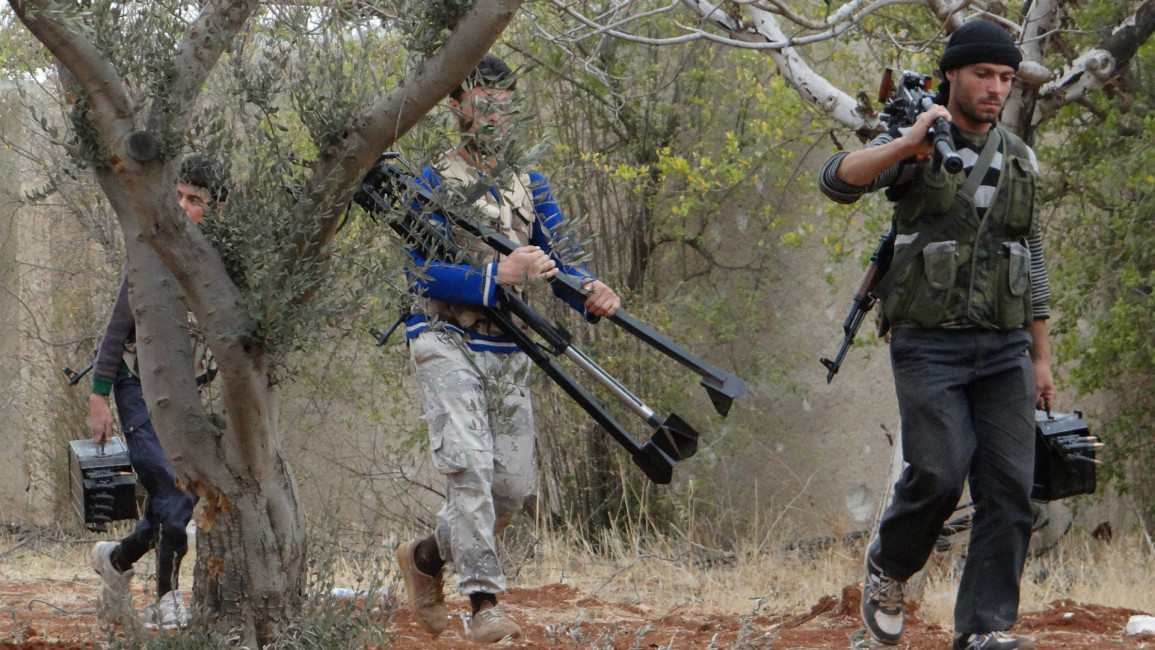The rise and fall of Syria's Hazzm rebel group
For months, the US-backed Hazzm rebel movement held key areas of the Aleppo countryside, boasted thousands of fighters and scores of tanks, and was led by the former commander of the Free Syrian Army, Salim Idris.
Yet over just one weekend, it was defeated by the local al-Qaeda affiliate, the Nusra Front, which began an assault on Hazzm to end the influence of its "criminal and corrupt" leadership.
It was an ignominious end for the group, which had expanded rapidly after being formed by Idris in response to his sacking as head of the FSA in late 2013.
Following its defeat, Hazzm's leadership issued a statement announcing that it was being dissolved, and that its fighters would join the Levant Front, a large "umbrella group" of Aleppo's main armed opposition factions.
But in a later statement, the Levant Front threatened to hunt down the leaders of Hazzm, saying that some among the group were allied with criminals.
RELATED: Nusra drives Hazzm from Aleppo in lightning attack
"The mere belonging to Hazzm is not a crime; only those who prove guilty of crimes against Muslims and jihadists will be held accountable," the Front said.
"As for Hazzm fighters who prove to be innocent, we shall not condemn them, on the condition that they pledge to continue their jihad and not to fight alongside corrupt criminals again."
Idris formed Hazzm in late 2013 after he was removed from the FSA leadership on the orders of the US-backed Syrian National Coalition, an opposition group in exile. He reportedly retained the backing, and promised funding, from the US - despite his sacking.
In January 2014, Idris announced the formation of the Hazzm movement, which included factions from Aleppo, Idlib, Hamah, the western countryside of Damascus and Latakia's countryside.
The majority of Hazzm fighters were in Aleppo's rural western areas. Its largest faction was the 1,000-strong Atarib Martyrs brigade.
Its expansion was aided through fair pay (about $200 a month for fighters), access to advanced weapons and equipment (it had 27 tanks in Aleppo alone), and funding and support by the US under its programme to train moderate rebel groups.
However, this was also the group's undoing. Nusra has considered all US-backed factions inevitable future enemies, and has set about eliminating them before they become a large well-trained force in the region.
To do this, Nusra fought under the pretext of combating corruption.
This is an edited translation from our Arabic edition.



